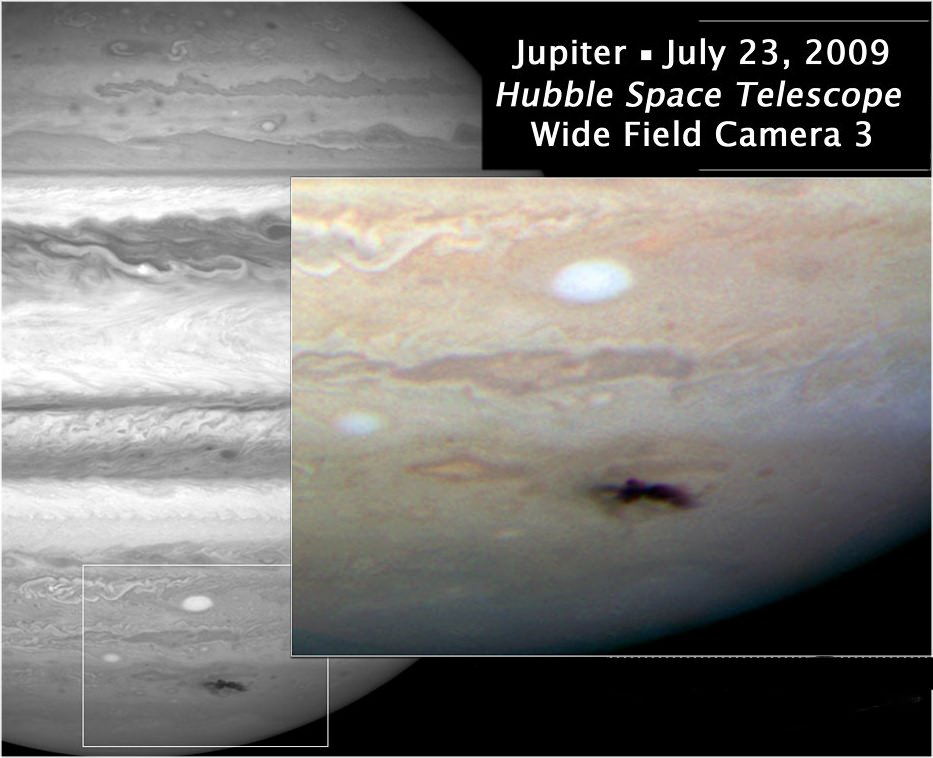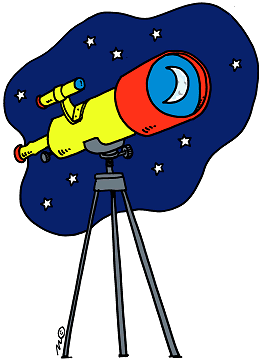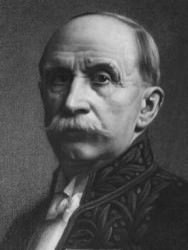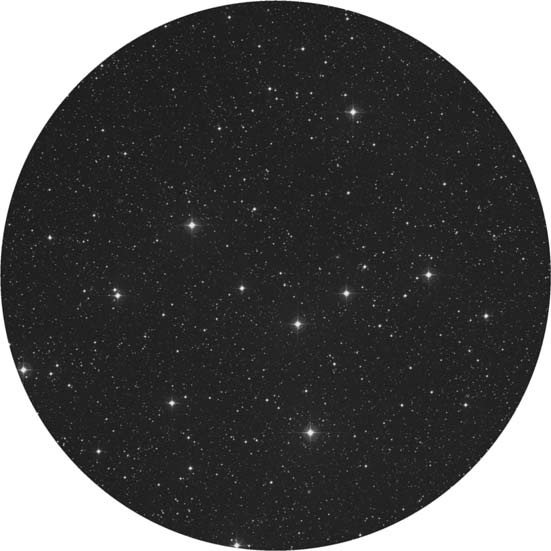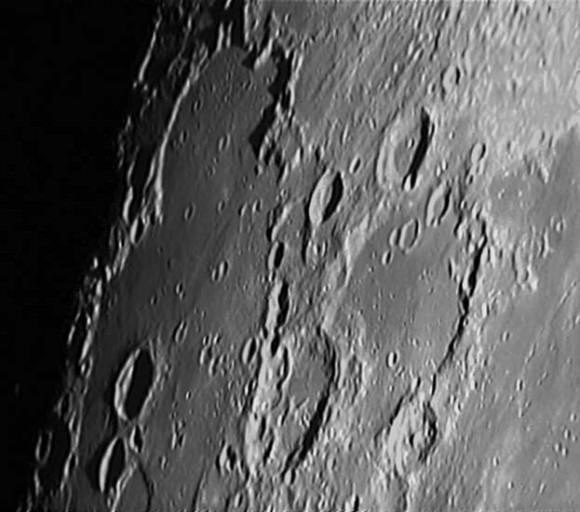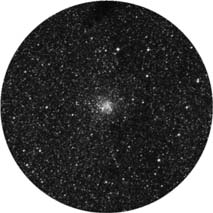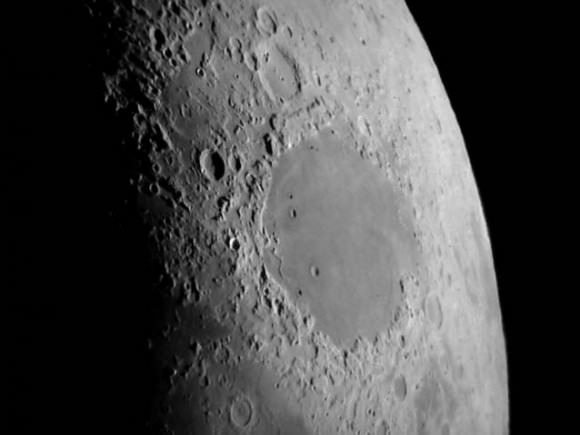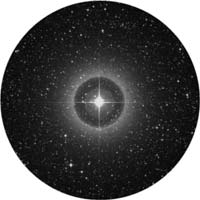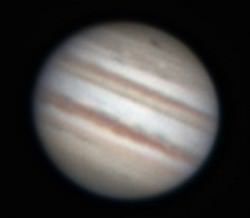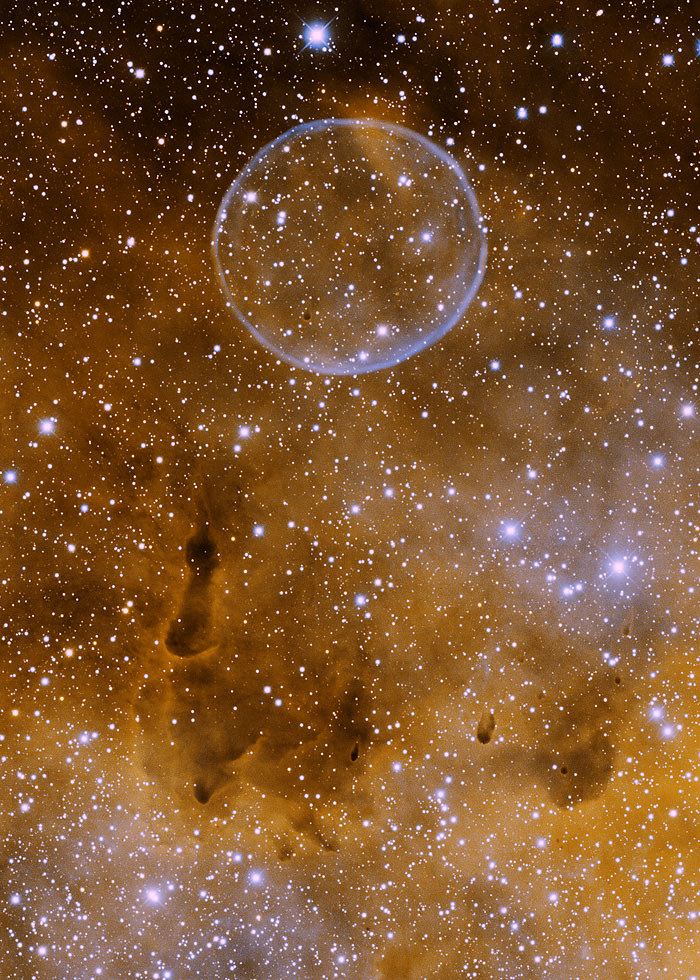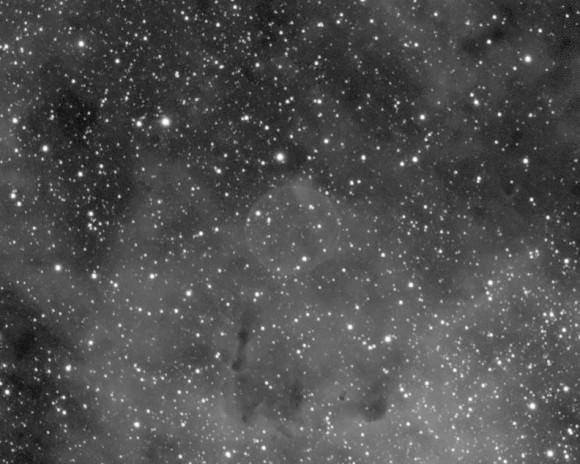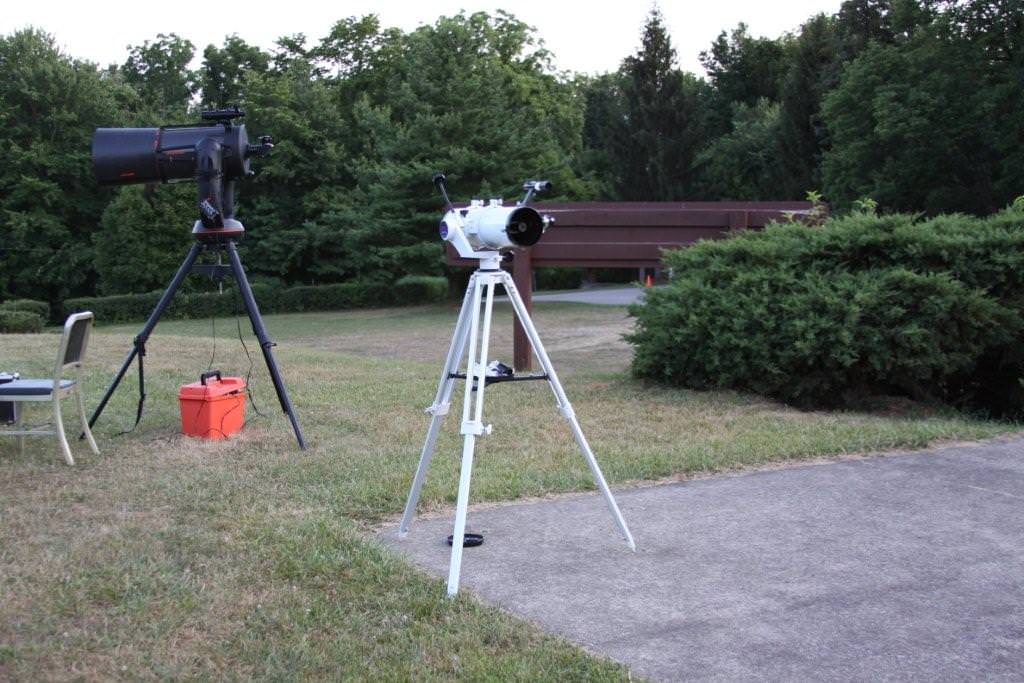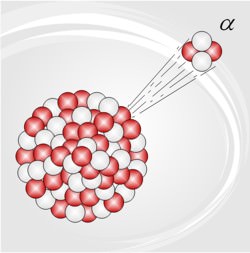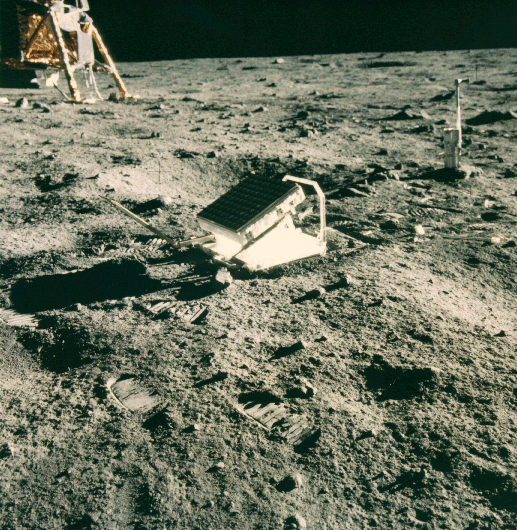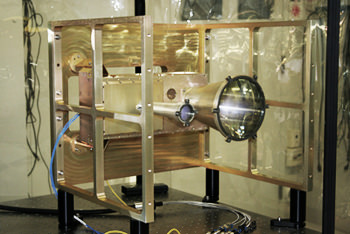So what’s the latest telescope I’ve been testing? This time it’s a Vixen R130Sf Newtonian Reflector Telescope and PortaMount II. I can tell you right now that I’ve never laid my hands on a telescope that I was more comfortable with out of the box than this one… But, I guess I really need to start the story from the beginning, don’t I? Then follow me over to the Observatory and I’ll tell you how this charming Vixen stole my heart away.
Quite frankly, folks, as the head of a non-profit organization it’s my job to beg. Sure, I’d love to be sitting in an air conditioned office in a swivel chair telling my secretary to send out a purchase order for equipment – but that ain’t happening. At WRO, we don’t charge anything for our public programs, educational outreach, planetarium programs, or even visiting schools, libraries, or doing guest speaker shots. That’s just the way it is. Astronomy education should be free and we’re gonna’ keep it that way. So, when the time comes each year for us to give our Hidden Hollow Star Party, somebody has to approach a whole lot of astronomy equipment manufacturers and humble themselves to try to get door prizes. Those door prizes then go into a raffle where you buy tickets and that’s how we make our operating money.
You know, the good stuff like electricity, toilet paper, trash bags and coffee…
In these economic times, it’s not easy for any company to donate anything – much less something valuable. That’s why we were completely stunned when Janet D. of Vixen Optics told us they would donate a Vixen R130Sf Newtonian Reflector Telescope and PortaMount II. We would have been thrilled with a plossl eyepiece. Can you imagine how I felt when I got that news? My starz… We might even sell enough raffle tickets on that one to be able to afford to have new Styrofoam cups this year! Needless to say, we were incredibly honored and we knew that we’d have to take it out of the box to display it.
Can we have first light?
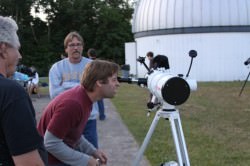 Needless to say, the guys were on it the moment the boxes made it to the concrete pad. Tape was cut, packing materials carefully removed and restored, optics gently lifted and ready for assembly. You know what? The Vixen PortaMount II is the easiest mount I’ve ever put together. Not one thing on it fought me. The HAL 130 tripod slicked right into place at the perfect height and I was totally delighted to see captive screws on both the mount and accessory tray that meant nothing was going to get lost in the dark. The tripod itself is very light aluminum, weighing in at right around 12 pounds . But, it’s by no means “cheap”. The legs are high grade material and extend from just about 32″ to just a little over 50″. The tube rings for the scope weren’t cheaply made either. The hinges didn’t “flap” when they were open. The just connected perfectly to the famous Vixen dovetail, the dovetail slid into place and the two knobs that hold it were very easy on arthritic hands.
Needless to say, the guys were on it the moment the boxes made it to the concrete pad. Tape was cut, packing materials carefully removed and restored, optics gently lifted and ready for assembly. You know what? The Vixen PortaMount II is the easiest mount I’ve ever put together. Not one thing on it fought me. The HAL 130 tripod slicked right into place at the perfect height and I was totally delighted to see captive screws on both the mount and accessory tray that meant nothing was going to get lost in the dark. The tripod itself is very light aluminum, weighing in at right around 12 pounds . But, it’s by no means “cheap”. The legs are high grade material and extend from just about 32″ to just a little over 50″. The tube rings for the scope weren’t cheaply made either. The hinges didn’t “flap” when they were open. The just connected perfectly to the famous Vixen dovetail, the dovetail slid into place and the two knobs that hold it were very easy on arthritic hands.
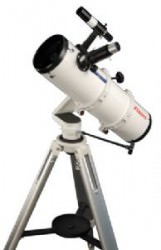 Now for the optical tube. Again, the scope rings didn’t flap around like broken bird wings when you opened them and they fit comfortably around the OTA. You didn’t feel like you had to torque it down to make it hold the tube and the felt lining made it just right so it was easy to rotate the tube and not even disturb the mount’s position. The scope body is well crafted. It’s lightweight at less than 20 pounds – but it has a very solid feel to it. Trim rings and mirror cells are finished well… not just covered like an afterthought. The four-vane spider is rock solid, but I’ll warn you in advance the primary mirror isn’t center marked. In this case, it’s a small scope. It really doesn’t need to be. The 2″ rack and pinion style focuser is nice and solid and doesn’t slop around. It has good tension and appears to be very well machined for lasting quality.
Now for the optical tube. Again, the scope rings didn’t flap around like broken bird wings when you opened them and they fit comfortably around the OTA. You didn’t feel like you had to torque it down to make it hold the tube and the felt lining made it just right so it was easy to rotate the tube and not even disturb the mount’s position. The scope body is well crafted. It’s lightweight at less than 20 pounds – but it has a very solid feel to it. Trim rings and mirror cells are finished well… not just covered like an afterthought. The four-vane spider is rock solid, but I’ll warn you in advance the primary mirror isn’t center marked. In this case, it’s a small scope. It really doesn’t need to be. The 2″ rack and pinion style focuser is nice and solid and doesn’t slop around. It has good tension and appears to be very well machined for lasting quality.
Now for the finderscope. Ah, yes… Vixen did this one right, too. No hookey jookie red dots or telrads here. Just a very generous 6×30 optical finderscope on a sturdy little bracket with spring tensioners to fine tune it. What’s that you say? Uh, huh. Well, let’s see you use your red dot finder when the batteries run out and you’ve got 75 kids waiting to see something and the nearest department store is 15 miles away. And ya’ wanna’ know what else? The daggone thing was less than a degree off center right out of the box! I had a hard time believing it until I saw it with my own eyes.
Oh, I’m getting more comfortable by the minute here.
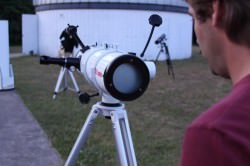 Next? Balance. Geez, Louise… I want to meet the guys that designed these things, because I didn’t have to move the optical tube more than an inch from where I first laid it in the rings to hit balance. The Vixen PortaMount II is an absolute engineering work of art. There’s a little cubby built in with tools should you need to adjust the tension for the alt-az, but it just didn’t need it. Just the slightest amount of friction tension was all it took and no matter what position you put the scope in, it just stayed there. Quite frankly, after having used a whole lot of clunky German equatorial mounts over the years, I was amazed. I’ve used alt-az, too… But nothing of this caliber. It’s like an incredibly well balanced dob… with legs! I’ve attached the slow motion controls, which can be put on either side of the axis, but unless you were using ridiculously high magnification, just a slight touch of the hand keeps this scope where you want it to be. Thanks to the high quality of the PortaMount II, it is just that comfortably balanced.
Next? Balance. Geez, Louise… I want to meet the guys that designed these things, because I didn’t have to move the optical tube more than an inch from where I first laid it in the rings to hit balance. The Vixen PortaMount II is an absolute engineering work of art. There’s a little cubby built in with tools should you need to adjust the tension for the alt-az, but it just didn’t need it. Just the slightest amount of friction tension was all it took and no matter what position you put the scope in, it just stayed there. Quite frankly, after having used a whole lot of clunky German equatorial mounts over the years, I was amazed. I’ve used alt-az, too… But nothing of this caliber. It’s like an incredibly well balanced dob… with legs! I’ve attached the slow motion controls, which can be put on either side of the axis, but unless you were using ridiculously high magnification, just a slight touch of the hand keeps this scope where you want it to be. Thanks to the high quality of the PortaMount II, it is just that comfortably balanced.
So, now we’re off to the optics test. Well, finally. A little flaw at last or one of you out there is going to accuse me of gushing Vixen because they donated a scope. If you’ve been paying attention, then you know the key word here is Vixen R130Sf Newtonian Reflector Telescope. And what will happen to any reflector telescope that’s made a 3,000 mile trip via UPS? Yeah. It needed collimated. Painful process involving lasers, artificial stars and much pulling of hair and gnashing of teeth? No. Just a tweak with a screwdriver. Just like the finderscope, it only needed the most minor of adjustments to be put right back where it belonged.
In the comfort zone…
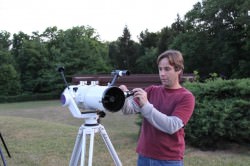 But! Back to the optics. The Vixen R130Sf Newtonian Reflector Telescope came with two eyepieces – a 20mm and 6.3mm – and this weird looking extension I wasn’t familiar with. Perhaps the 1.25″ adapter? Well, as soon as I put in an eyepiece to do anything more serious than align the finder, I figured it out. The extension/adapter needs to be screwed over the focuser drawtube to bring the eyepiece out to the proper focal length for perfect focus for these eyepieces. It’s a little unusual, but I didn’t walk out of the cornfield yesterday, you know. The Vixen R130Sf is a 650mm focal length f/5 and I’d rather have an eyepiece extender incorporated into the design than have an added lens down inside to rob more light and collect dust. Once in place? Blam! Razor sharp focus and all we need is dark…
But! Back to the optics. The Vixen R130Sf Newtonian Reflector Telescope came with two eyepieces – a 20mm and 6.3mm – and this weird looking extension I wasn’t familiar with. Perhaps the 1.25″ adapter? Well, as soon as I put in an eyepiece to do anything more serious than align the finder, I figured it out. The extension/adapter needs to be screwed over the focuser drawtube to bring the eyepiece out to the proper focal length for perfect focus for these eyepieces. It’s a little unusual, but I didn’t walk out of the cornfield yesterday, you know. The Vixen R130Sf is a 650mm focal length f/5 and I’d rather have an eyepiece extender incorporated into the design than have an added lens down inside to rob more light and collect dust. Once in place? Blam! Razor sharp focus and all we need is dark…
And I’m feeling really comfortable.
The Milky Way came out to sing and dance that night and the R130Sf Newtonian Reflector Telescope on a PortaMount II did Vixen proud. Without being tied to the restrictions of the EQ, I was all over the sky. It was simply nothing to find 10 Messier objects within minutes – and even share the view. I always have great fun when I’m observing with a bunch of guys with GoTo scopes and we race to see who gets there first, eh? By the time they get done aligning everything and punching buttons, I’m already two past you. But then, give me a faint, vague fuzzy and it make take an hour and six star charts. The real kicker for me is just that it is a pure scope. It doesn’t require batteries, electric cords or power packs. Just a little sky knowledge and patience are all it takes.
So how was the view? We’re talking about a telescope with an aperture of slightly over 5″ and the ability to reach at least 12th magnitude. Low power delivered great rich field, but did have just a tiny little band of coma around the outside edge. Perhaps this is something that would bother someone like say, oh, an astrophotographer, but at first I was too busy being delighted on its nebula performance to even notice. Those little touches like being able to see the Trifid nebula mean alot to me, you know. Higher magnification delivered smack you in the eye resolution on objects like globular clusters and planetary nebula… And I just didn’t have the heart to try other eyepieces in it to see if it cleared up the slight coma issue. Why?
Because I was so darned comfortable.
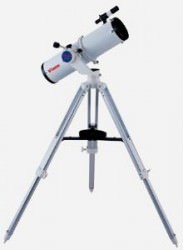 I walked all over the night sky with that Vixen telescope, and it’s gonna’ break my heart to see it go. I’ve handled a lot of expensive, exquisite optics over the years – just like I’ve handled a lot of gotta’ be careful with ’em because they’re cheap scopes… But I’ve never ran across one that felt like I’d been using it for years the moment I laid hands on it. The Vixen R130Sf is absolutely the perfect size for someone who needs enough aperture to light up popular deep sky objects, but doesn’t need to lug around a 12″ telescope where ever they go. This one is a true workhorse – capable of showing a huge amount of the NGC catalog and delivering lunar and planetary views without requiring dewshields, battery packs, bells, strings or whistles. It’s just a great scope that’s built to last and one meant for someone who plans on using it for years. If you think there’s a coma issue? Then don’t look at the very edge… look at those perfect sharp pinpoints in the middle. The PortaMount II is quality through and through, it’s not going to just fall apart on you and it would be oh-so-easy to adapt any number of other telescopes right to it just as easily as the R130Sf went into place with that blessed universal dovetail. Go on, accuse me of saying things I don’t mean because this is a donation… I dare you. Because I’m telling you right now that there’s a couple of my scopes that I’ve lent to friends that I’m going to offer to them for cheap. Why?
I walked all over the night sky with that Vixen telescope, and it’s gonna’ break my heart to see it go. I’ve handled a lot of expensive, exquisite optics over the years – just like I’ve handled a lot of gotta’ be careful with ’em because they’re cheap scopes… But I’ve never ran across one that felt like I’d been using it for years the moment I laid hands on it. The Vixen R130Sf is absolutely the perfect size for someone who needs enough aperture to light up popular deep sky objects, but doesn’t need to lug around a 12″ telescope where ever they go. This one is a true workhorse – capable of showing a huge amount of the NGC catalog and delivering lunar and planetary views without requiring dewshields, battery packs, bells, strings or whistles. It’s just a great scope that’s built to last and one meant for someone who plans on using it for years. If you think there’s a coma issue? Then don’t look at the very edge… look at those perfect sharp pinpoints in the middle. The PortaMount II is quality through and through, it’s not going to just fall apart on you and it would be oh-so-easy to adapt any number of other telescopes right to it just as easily as the R130Sf went into place with that blessed universal dovetail. Go on, accuse me of saying things I don’t mean because this is a donation… I dare you. Because I’m telling you right now that there’s a couple of my scopes that I’ve lent to friends that I’m going to offer to them for cheap. Why?
Because I’ll want that Vixen comfort back.
Check out Amazon.com for cool deals on Vixen R130Sf Newtonian Reflector Telescope.
My most heartfelt thanks to the good folks at Vixen Optics for their generous donation. Please know that your support will benefit thousands of children who come to us each year for astronomy outreach! For those of you interested in the Vixen R130Sf Newtonian Reflector Telescope and PortaMount II, please support Vixen by purchasing from any of their premier dealers, such as OPT, Woodland Hills, Smart Astronomy, Telescopes.com and Scope City. Many thanks to Mike Romine for remembering to bring a camera, and to Mark Vanderarr for being far more photogenic than myself, and to Steve Carter and Bob Kocar for helping me “test” it.

